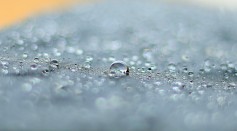seawater
Underwater Device ‘Smells’ Seawater, Detects Novel Molecules With Potential for Drug Manufacture
Decline of Arctic Sea Ice: Six Ways Loss of Frozen Seawater Could Affect Humans

Seawater Split to Produce Hydrogen; New System Could Lead to Generating Low-Carbon Fuel for Vehicles

Pink Oceans: Scientists Dye Ocean Water as Part of Coastline Experiment

390-Million-Year-Old Seawater Has Been Discovered; Is It Indicative of Oceans’ Adaptation to Climate Change?

Japan Develops Fluorine-Based Nanomembrane for Quick, Efficient Water Desalination

Suitcase-Sized Device Turns Seawater Drinkable by 0.3 Liters Per Hour; Cleansing Powered by 20 Watts Like Phone Charging

Cow Manure Turned Into Filter to Make Drinking Water from Seawater
Robotic Submersibles to Watch Largest Iceberg Crash Into Island

Scientists Looking to Use Seawater to Create Unlimited Lithium Power Supply
New Power Generator Design to Run From Seawater
Robotic Fish With Biosensors Scours The Ocean For Water Pollution Data
'Nuclear Power' Found Limitless Via Seawater Uranium Extraction To Supply The World's Renewable Energy
Ocean Microbes and How They Affect Our Atmosphere in the Age of Climate Change
Most Popular

How Technology Is Changing the Real Estate Industry?

How a Plant-Based Diet Can Protect Against Breast Cancer: Insights from Nutrition Research

Study Reveals High Turnover in Scientific Research Careers: What This Means for Future Scientists

Why It's So Difficult to Lose Weight: The Biological Explanation Behind Obesity






